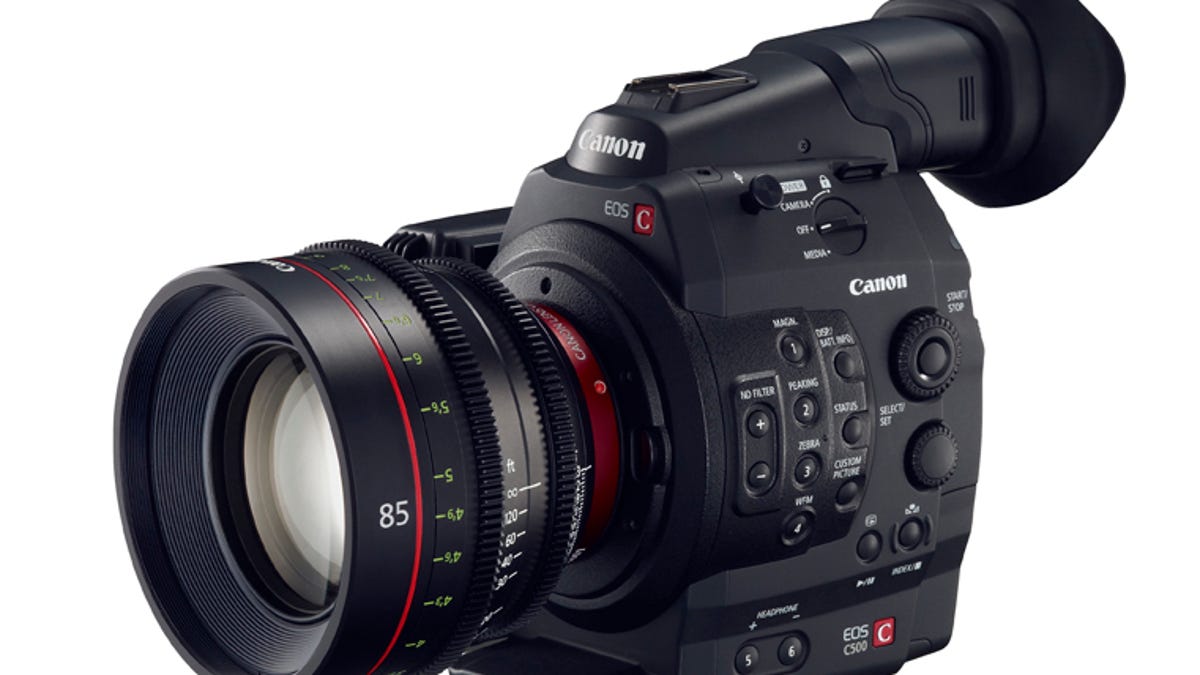Canon hits 4K at NAB 2012
As rumored, Canon unveiled several 4K video cameras at this year's National Association of Broadcasters show. You won't see most of them for a while, though, and one may just make you cranky.

Canon's big news for this year's NAB show are the announcements of a $15,000 4K-capable version of the EOS-1D X, dubbed the EOS-1D C, and a prototype preview of the C500, a 4K- and 2K-capable new model in its Cinema EOS line. And while the prototype sounds quite interesting, I suspect the 1D C will trigger more irritation than jubilation for Canon video shooters.
Why? Well, for starters, the specs for the 1D C make it look like Canon purposefully, um, "held back" some features from the 1D X. For instance the 1D C has a headphone jack, which really should have been on the 1D X; I'm not sure why Canon thought the 1D X needed a strobe socket instead, as it's much less of a studio camera than a field camera. Another feature that's bound to blow some mental fuses is the 1D C's support for usable direct-record HDMI output and the ability to view the scene on the LCD while the HDMI is active. Those, plus support for Canon Log Gamma, should all have been in the 1D X.
Furthermore, while the 4K/24p aspect of the 1D C is welcome, as well as its capability to use a cropped portion of the sensor (19 x 28.4mm) and that it has a Super 35 crop to match the EF Cinema lenses, the fact that it uses Motion JPEG as its codec and it's only 8-bit 4:2:2 capture paints a less-than-enthralling picture. Resolution is only half the battle: dynamic range needs a boost to go with it. I suspect that the latter two constraints are the result of trying to retrofit the 1D X with the new capabilities.
But let's not dwell on the issue that the 1D C seems grossly overpriced simply for what seems to be a bunch of firmware updates, just because it has the magic "4K" in the specs, and move onto the prototype of the C500, which sounds more intriguing.
In contrast to the 1D C, the C500 will offer 10-bit 4K raw output at up to 60p with no "de-Bayering"; Canon's particular phrasing that way, rather than "demosaicking," opens the possibility for the company's new 8.85-megapixel Super 35 sensor to have a nonstandard color filter array. It will also be able to output 2K at 12-bit 4:4:4 RGB or 10-bit YCrCb. The latter enables frame rates up to 120fps. Now that is cool. And its capability to simultaneously record a 50Mbps HD video sounds very useful. The C500 will come in two versions: one with an EF lens mount and one with a PL mount. To go with these, Canon also announced what sounds like a prototype of a 30-inch 4K reference display.
This is as good a time as any for a small note about 4K video. I've read several pieces (like this one) that assert that you don't need video resolution higher than HD because the display devices don't support it or because the human eye can't resolve it. Both of those are immaterial: you want higher resolutions for increased detail for editing purposes. Sure, if you're going straight to YouTube or broadcast TV without any significant edits, then at this point 4K is silly. But if you're masking and greenscreening moving video, or trying to bring out detail in highlights and shadows, the more information you have the better off you are, regardless of the final output display. (Here's the cocktail-party soundbite: "Oh, 4K's important if you do a lot of compositing.") That presupposes, of course, that you have lenses capable of resolving the detail and that you're not trading off tonal range to get it. And at some point in the future, that 4K may come in handy for huge, immersive video experiences. I'd much rather have my holodeck be 4K than HD.
In addition to the camera news, Canon also announced the development of 2 EF Cinema Zoom lenses, each in either EF or PL mount: a 15.5-47mm T2.8 and 30-105mm T2.8.
All the products should be available in (waves hands) 2012.
Finally, Canon also plans to release a firmware update in May for its XF series of handheld camcorders that enables 35Mbs recording in 1,440 x 1,080 pixels.

